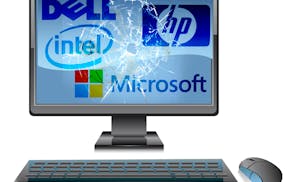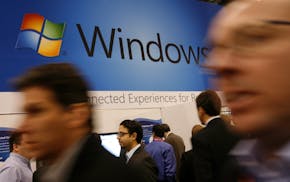Q: I've been using a "Western Digital My Book Live" external hard drive in my home network. But after buying a new wireless router, I can only find the My Book with my wired desktop PC. The drive is invisible to my Wi-Fi laptop.
Here's my setup: I plugged the new router into my existing DSL modem-router, then connected the My Book to the new router. Is it a network address problem? Would it help if I reprogrammed the My Book with a "static" network address that never changes?
Barney Johnson, Minneapolis
A: The disk drive vanished from your laptop because at least one device on your home network has the wrong data address. If you fix that, a larger network overhaul won't be necessary.
Every device on a home network has an Internet Protocol (IP) address. But the "My Book Live" hard drive doesn't come with an IP address. Instead, an address is assigned to it by the network's router, which acts as a data traffic cop.
But your network is a special case because it uses two network routers that are connected to each other. In order for that setup to work, both routers must be assigning the same set of IP addresses. If they don't, that would explain why your laptop can't find the My Book device.
Check your original modem-router to find out what range of IP addresses it assigns to other network devices. Make sure that the new router also assigns IP addresses in that range. In addition, make sure that the new router's own IP address falls within that range, and that its address isn't the same as the address of any other device already in your network.
After that, try connecting your laptop to the My Book by typing "http://mybooklive/UI/" (don't use the quote marks) into the address line of your Web browser. If the My Book has been assigned an appropriate IP address, your laptop should find it.
I recommend to continue using the ever-changing "dynamic" IP addresses in your network. Using permanent "static" IP addresses is complicated and unnecessary.
More surprises
More problems are being reported in response to last week's column about Windows 8 PCs that unexpectedly upgrade to Windows 8.1 (see tinyurl.com/k6gzwjn). The upgrade appears to happen on PCs set to automatically install Windows updates.
Barbara Bates of Isanti, Minn., said the screen of her two-year-old Dell PC began having problems after the abrupt Windows upgrade.
Robin Kingdon of Perth, Australia, said his two-year-old Asus notebook PC lost its sound after the upgrade.
Both problems appear to be caused by Windows 8 software "drivers" that aren't quite compatible with Windows 8.1. To download new Dell video driver software, go to tinyurl.com/o34cfft and identify your PC model. To check the compatibility of Asus sound driver software, or to replace it, see tinyurl.com/l876aoq and tinyurl.com/mk3eywa.
For fixes for common Windows 8.1 problems, see tinyurl.com/o8ft5ba.
E-mail tech questions to steve.j.alexander@ gmail.com or write to Tech Q&A, 425 Portland Av. S., Minneapolis, MN 55488. Include name, city and telephone number.

Alexander: A beeping computer is telling you what's gone wrong inside

Alexander: How to stop deleted iPhone e-mails from coming back

Alexander: Refurbished PCs may need a BIOS update to use new components

Alexander: Windows 11 not always to blame for browser or e-mail problems


